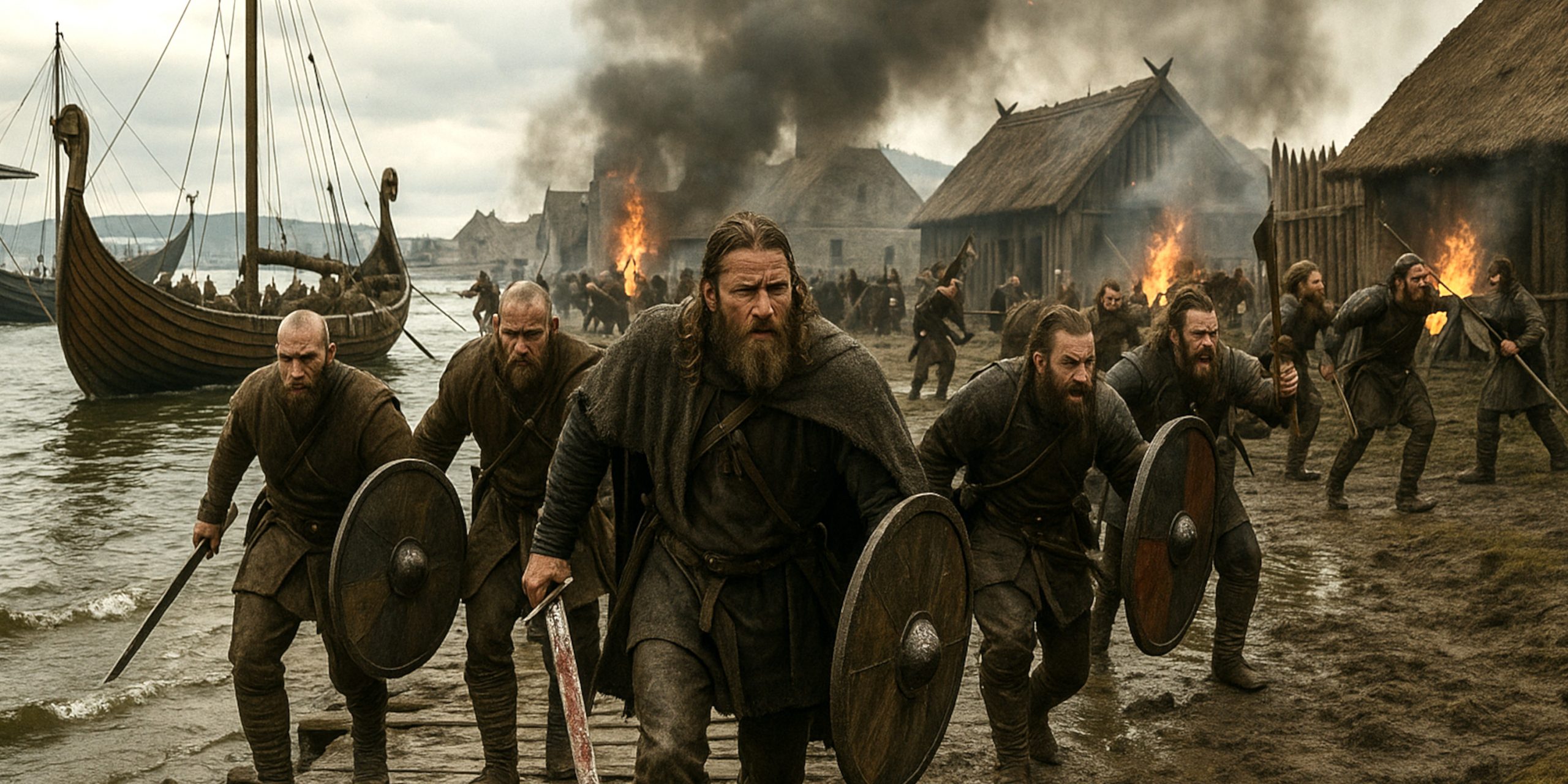
The Viking seizure of Dublin in 841 marked a pivotal moment in Irish history. What began as seasonal raiding along the Irish coast developed into something more permanent, as Norse warlords established a longphort on the River Liffey. This fortified ship encampment would evolve into the city of Dublin. The event was less a single battle and more a campaign of aggression, diplomacy, and gradual settlement by Norse groups, particularly those from Norway.
Background
By the early 9th century, Norse raiders had already launched devastating attacks across Britain and Ireland. Irish monasteries and coastal settlements were frequent targets. By 795, the first recorded Viking raid struck Rathlin Island, and in the decades that followed, the intensity and frequency of attacks increased. In 841, the Vikings returned with intent to stay.
Their decision to remain in Dublin was a shift from mobile plundering to territorial control. This coincided with political fragmentation in Ireland, where regional kings competed for dominance and were often willing to ally with Viking bands to gain advantage over rivals.
Forces
Irish Kingdoms Involved:
- Kingdom of Brega (southern Uí Néill)
- Kingdom of Leinster
- Smaller local rulers around Áth Cliath (Dublin)
Viking Forces:
- Norwegians under various jarls
- Later consolidation under figures like Turgesius and, possibly, Olaf the White
Leaders and Troop Composition
| Side | Leader(s) | Estimated Troop Size | Notes |
|---|---|---|---|
| Norse Vikings | Likely Turgesius, later Olaf the White | 1,000–2,000 warriors | Mainly Norwegians with longships; included seasoned warriors and craftsmen |
| Irish resistance | Máel Sechnaill mac Máele Ruanaid (later), Cennétig mac Gaíthéne | Variable; fragmented levies | Local forces, largely infantry with limited central coordination |
Arms and Armour
Vikings:
- Weapons:
- Single-handed swords (pattern-welded)
- Broad-bladed axes
- Spears (thrusting and throwing types)
- Defensive Gear:
- Round shields with iron boss
- Leather or mail hauberks (less common early on)
- Iron helmets (rare, usually for higher-status warriors)
Irish:
- Weapons:
- Spears (common among levies)
- Short swords and slings
- Clubs and axes (especially among rural warriors)
- Defensive Gear:
- Minimal armour
- Small wooden shields
- Helmets were rare and usually reserved for elite nobles
The Norse advantage lay in their cohesion, naval mobility, and superior weaponry, particularly during close-quarters fighting.
Archaeology
Dublin’s earliest Viking settlement has been extensively excavated, especially in the Wood Quay area. Key findings include:
- Remnants of the original longphort fortifications
- Viking longhouses built from post-and-wattle construction
- Imported items from the Norse world, indicating a growing trade hub
- Weapons such as iron swords, spearheads, and axe heads
- Comb-making tools, glass beads, and silver arm rings
The evidence confirms Dublin quickly became not just a military base but also a centre of trade and manufacture.
Battle Timeline
| Year | Event |
|---|---|
| 795 | First recorded Viking raid in Ireland (Rathlin Island) |
| 820s–830s | Regular Viking attacks on coastal monasteries and towns |
| 837 | Major Viking fleet attacks both the Boyne and Liffey rivers |
| 841 | Vikings establish longphort on the Liffey; Dublin founded |
| 842–845 | Raids continue from the base; control of inland routes expands |
| 845 | Turgesius reportedly drowned by Máel Sechnaill (disputed account) |
| 853 | Arrival of Olaf the White, solidifying Norse rule over Dublin |
Contemporary Quotes
From the Annals of Ulster (841):
“Foreigners set up a longphort at Áth Cliath and overwintered there for the first time.”
From the Chronicon Scotorum:
“Great slaughter was made of the foreigners at the hands of the men of Brega.”
While sources are often terse, they reflect the shock and upheaval felt across Irish society. Overwintering in Ireland was a new and ominous step.
The Seven Swords takeaway
The capture of Dublin in 841 was not a single climactic battle but a process of invasion, entrenchment, and colonisation. It represented a turning point where the Viking presence in Ireland shifted from seasonal raiding to permanent settlement. Over time, Dublin would grow into a thriving Norse-Irish town, later becoming a battleground for power among Gaelic kings, Viking jarls, and eventually the Anglo-Normans. The Norse legacy remains embedded in the city’s foundations, linguistically, archaeologically, and in its long maritime history.
Watch the documentary:



